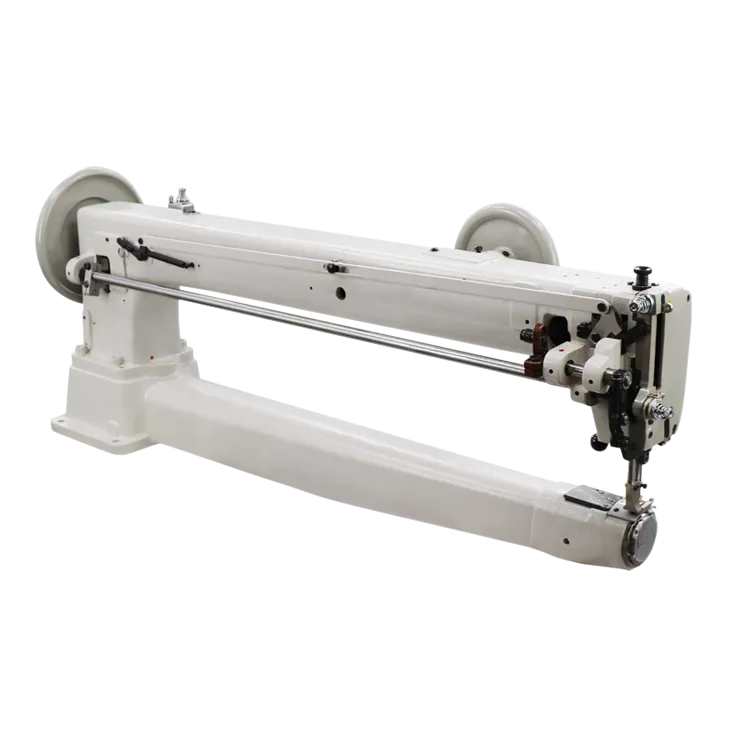Understanding Twin Needles and Their Uses in Sewing Projects
What is a Twin Needle?
In the world of sewing, tools and techniques continually evolve to enhance creativity and efficiency. One such tool that stands out for its unique capabilities is the twin needle. But what exactly is a twin needle, and how can it transform your sewing projects?
A twin needle, as the name suggests, is a needle that has two points and two threads. These two needle points are attached to a single shank, allowing you to sew two parallel lines of stitching simultaneously. Typically, the distance between the two needle points can vary, commonly ranging from 2mm to 6mm apart, depending on the desired outcome and fabric type.
Uses and Applications
The most common use of a twin needle is for decorative stitching. It is especially popular for hemming, adding piping, or creating pin tucks on various types of fabric, including knits, wovens, and stretch materials. The ability to create two rows of stitches at once not only saves time but also adds a professional touch to your sewing projects.
In addition to its decorative uses, a twin needle is an excellent tool for ensuring that seams on knit fabrics remain flexible. When sewing stretch materials like jersey or spandex, using a twin needle allows the fabric to retain its elasticity while securing the seams. This is particularly important in garment construction for t-shirts or activewear, where movement and comfort are essential.
How to Use a Twin Needle
Using a twin needle requires some adjustments to your sewing machine. Here’s a simple step-by-step guide
1. Select the Right Needle Choose a twin needle with a suitable size and distance that matches your sewing project. Sizes typically range from 75/11 to 100/16, with the distance between the needles affecting the look of the stitches.
what is a twin needle

3. Threading Thread the twin needle using two separate threads. This means you will use two spools of thread or wind the second thread onto a bobbin and use it for the second thread path.
4. Adjust Tension You may need to adjust the machine’s tension settings. Twin needles often require a slightly looser top tension to prevent skipped stitches or thread breakage.
5. Choosing Stitch Types While the most common stitch to use with a twin needle is a straight stitch, you can also experiment with decorative stitches or zigzag stitches, keeping in mind the spacing of the needles.
6. Sewing Always test on a scrap piece of fabric to ensure the stitches look correct and that the machine handles the fabric well before starting on your actual project.
Advantages of Using a Twin Needle
The twin needle offers several advantages that enhance both sewing efficiency and the aesthetic quality of finished projects
- Speed Because you’re stitching two lines at once, sewing becomes faster compared to sewing each line separately. - Professional Finish The parallel lines of stitching provide a clean, professional appearance, especially important for garments and home decor pieces. - Versatility Twin needles can be used for a variety of fabrics and projects, from quilting to garment construction, making them a valuable addition to any sewist’s toolkit.
Conclusion
In summary, the twin needle is a powerful tool that can elevate your sewing projects from ordinary to extraordinary. By understanding its uses and how to incorporate it into your sewing routine, you can unlock new creative possibilities. Whether you’re a beginner or a seasoned sewist, experimenting with a twin needle is sure to enhance your sewing experience and the quality of your finished projects. So, gather your materials, set up your machine, and get ready to stitch your way to new styles and techniques!
-
Industrial Cylinder Arm Sewing Machine: Revolutionizing Heavy-Duty SewingNewsJul.28,2025
-
Cylinder Arm Sewing Machine: Perfect for Special Sewing ApplicationsNewsJul.28,2025
-
Cylinder Bed Sewing Machine: Essential for Sewing Complex MaterialsNewsJul.28,2025
-
Heavy Duty Sewing Machine: The Essential Tool for Industrial ApplicationsNewsJul.28,2025
-
Computerized Pattern Sewing Machine: Revolutionizing Precision StitchingNewsJul.28,2025
-
Heavy Duty Industrial Sewing Machine: Power Meets PrecisionNewsJul.28,2025
-
Leather Sewing Machine: The Industrial Standard for Tough MaterialsNewsJul.18,2025





























